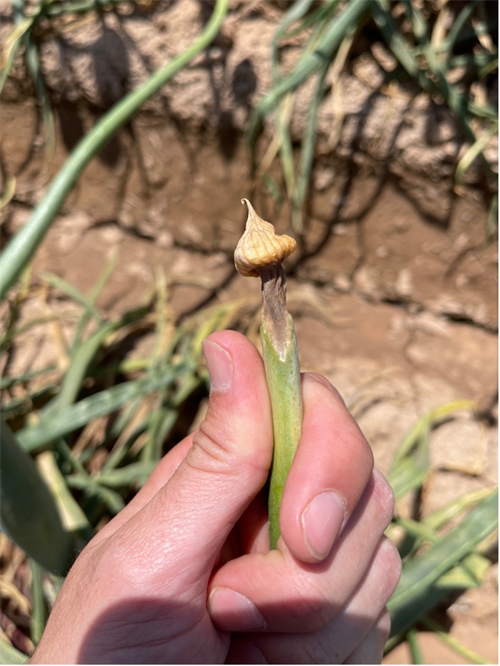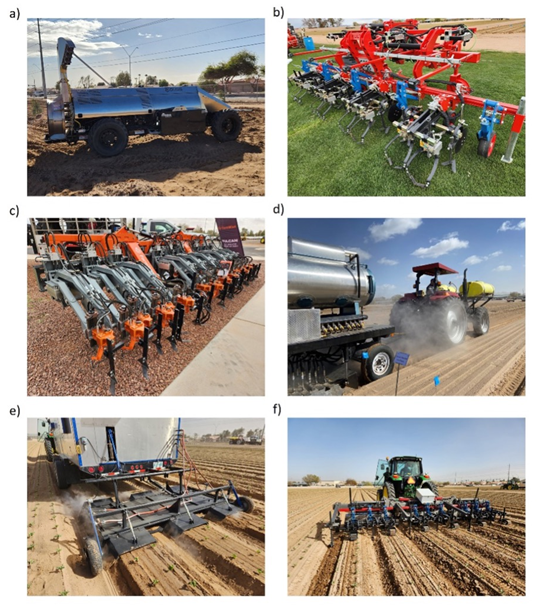Nov 29, 2023
Center Rot of Onion (2023-b)
DISEASE: Center Rot of Onion
PATHOGEN: Pantoea ananatis, Pantoea agglomerans, Pantoea alli and Pantoea stewartii subsp. indologenes
HOSTS: Onion (Allium cepa L.), garlic (Allium sativum L.), shallots (Allium cepa var. aggregatum L.), leeks (Allium ampeloprasum L.), chives (Allium schoenoprasum L.).
Symptoms and signs
Center rot of onion has not been a major problem in the desert southwest but when the environment is favorable, the disease can cause up to 90% loss. Foliar symptoms (symptoms on leaves) may start with water-soaked lesions spanning the length of the leaf blade, which gradually become blighted resulting in desiccation and collapse of the tissue. Experiments have shown that the bacteria can move from leaves to the bulbs, thus protecting foliage is important to manage the disease.
The bacteria can overseason to infect onions in a number of different ways. Like many bacterial pathogens, P. ananatis can be seed-borne with infested seed serving as a survival mechanism as well as a means of dissemination. It has been demonstrated that P. ananatis can be both naturally seed-borne and seed-transmitted in onion. The significance of the bacterium's ability to colonize seed is uncertain, as most onion seed production sites are located in arid climates but extremely important to understand to manage the disease.
Although P. ananatis can be seedborne, the proposed primary mode of transmission is by two insect vectors. Two species of thrips, tobacco thrips (Frankliniella fusca (Hinds)) and onion thrips (Thrips tabaci), have the ability to transiently acquire and transmit P. ananatis and P. agglomerans . The bacterium can persist in a non-circulative manner in the gut of thrips for 128 h, allowing the vector to infect plants over an extended period of time.
P. ananatis can survive epiphytically and endophytically on a wide range of hosts. These alternative hosts can serve as a source of inoculum in fields where susceptible crops are grown. In Georgia alone, 25 weed species, including carpetweed (Mollugo verticillata), common ragweed (Ambrosia artemisiifolia), crabgrass (Digitaria sanguinalis), common cocklebur (Xanthium pensylvanicum), curly dock (Rumex crispus), Florida pusley (Richardia scabra), sicklepod (Cassia obtusifolia), stinkweed (Thlaspi arvense), Texas panicum (Panicum texanum), vaseygrass (Paspalum urvillei), wild radish (Brassica spp.), yellow nutsedge (Cyperus esculentus) and other multiple crop plants were found to harbor P. ananatis populations asymptomatically.

Pic Credit: Colton Tew
To contact Bindu Poudel go to:
bpoudel@email.arizona.edu










